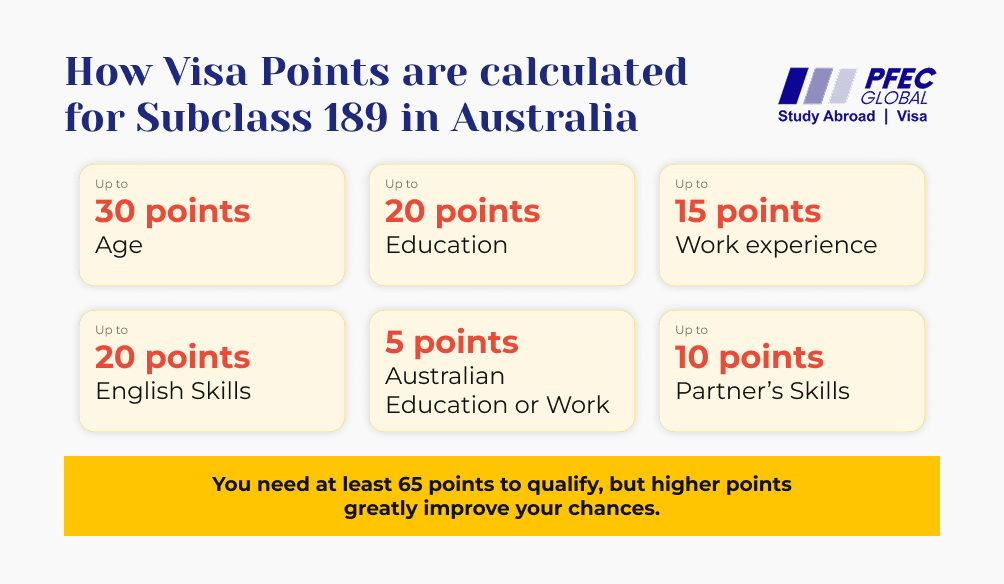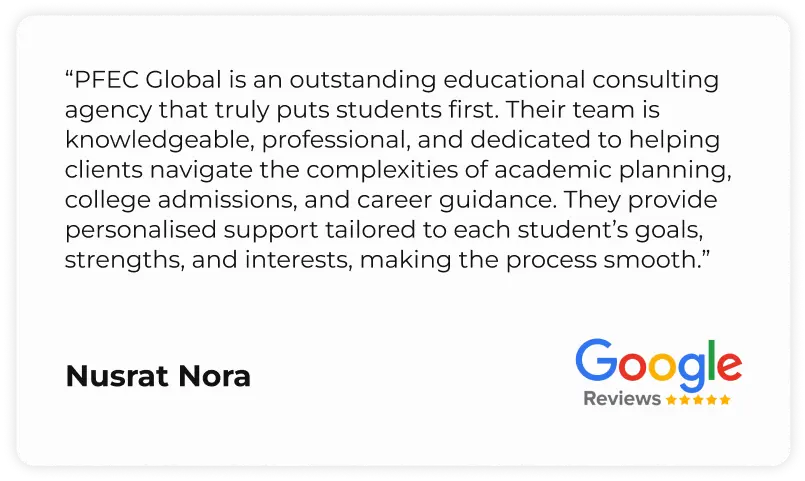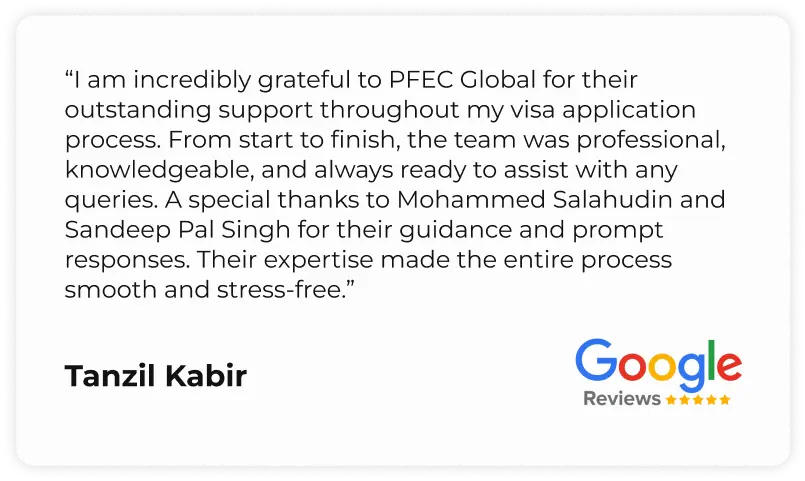Subclass 491 Skilled Work Regional (Provisional) Visa: Your Pathway to Australia
Discover various options that will help you take care of your health without breaking the bank.

Health insurance is an essential requirement for a worry-free experience while studying abroad.
International Medical Coverage: Health insurance provides you with the peace of mind to receive medical care anywhere in the world, ensuring you won't face overwhelming expenses.
Visa and Enrollment Support:Having health insurance can make obtaining a student visa and enrollment easier. This reduces the chances of your applications being delayed or rejected.
Financial Protection: In the event of an unexpected incident, having health insurance ensures that your medical expenses are covered. It safeguards you from potential financial stress.
Legal Compliance: Many countries create specific health insurance for international students. Securing this insurance not only safeguards your well-being but also shields you from potential legal complications and the risk of deportation. Protect yourself and ensure a smooth study experience abroad.
Comprehensive Care: Health insurance covers expenses related to hospital stays, prescription medications, mental health support, and much more.
Register with Us to Take the Next Step
Country-wise rules
The USA has a unique system that students must navigate to meet certain criteria. In contrast, Australia requires international students to have Overseas Student Health Cover (OSHC). Similarly, in the UK, students are obligated to pay an Immigration Health Surcharge (IHS) to gain access to the National Health Service (NHS). Additionally, some universities have their own specific requirements, which often include particular coverage limits in their health insurance schemes.
Selecting a plan
Recognizing the diverse needs of students, universities create customized health insurance policies that provide essential coverage. Students can conveniently enroll in these plans during their registration process, ensuring peace of mind from day one. If a university does not offer its own insurance, students must seek private health insurance, which may not fully meet their specific needs. It's crucial for universities to invest in comprehensive health insurance options that prioritize student well-being and security.
Purchasing Health Insurance
Health insurance is essential for students, and selecting the right plan is vital for their well-being. By carefully considering their unique needs, students can find a plan that offers the best balance of cost and benefits. After choosing a suitable plan and making the necessary payment, students will receive a certificate as proof of their coverage, ensuring assurance during their academic journey.
Country-wise rules
The USA has a unique system that students must navigate to meet certain criteria. In contrast, Australia requires international students to have Overseas Student Health Cover (OSHC). Similarly, in the UK, students are obligated to pay an Immigration Health Surcharge (IHS) to gain access to the National Health Service (NHS). Additionally, some universities have their own specific requirements, which often include particular coverage limits in their health insurance schemes.
Country-wise rules
The USA has a unique system that students must navigate to meet certain criteria. In contrast, Australia requires international students to have Overseas Student Health Cover (OSHC). Similarly, in the UK, students are obligated to pay an Immigration Health Surcharge (IHS) to gain access to the National Health Service (NHS). Additionally, some universities have their own specific requirements, which often include particular coverage limits in their health insurance schemes.
Subclass 491 Skilled Work Regional (Provisional) Visa: Your Pathway to Australia
If you’re a skilled professional aiming to settle in Australia but facing challenges with metro-based permanent residency, the Subclass 491 visa offers a clear alternative. It supports skilled migration into designated regional areas, where demand is high and opportunities are growing.
This provisional visa allows you to live, work, and study in regional Australia for up to five years. After just three years of meeting key conditions, including income thresholds, you may become eligible for permanent residency through the Subclass 191 visa.
This guide explains who can apply, how the process works, and why regional migration might be your best starting point.
What Is the Subclass 491 Visa and Who Can Apply?
The Subclass 491 Skilled Work Regional (Provisional) visa is a points-tested visa designed for skilled migrants who can contribute to Australia’s regional communities.
You may be eligible if:
- You are nominated by a state or territory government agency, or
- You are sponsored by an eligible relative living in regional Australia
To qualify, you must:
- Have an occupation on the Skilled Occupation List
- Obtain a positive skills assessment
- Submit an Expression of Interest (EOI) through SkillSelect
- Receive an invitation to apply from the Department of Home Affairs
- Score at least 65 points on the points test
Once granted, the visa allows you to:
- Stay in Australia for up to 5 years
- Live and work in a designated regional area
- Travel freely in and out of Australia while the visa is valid
- Apply for permanent residency after 3 years through the Subclass 191
Expert Tip: Your visa eligibility depends on your ability to meet nomination, occupation, and points test requirements. Strong documentation and regional alignment can significantly boost your chances.
Key Benefits of the Subclass 491 Regional Skilled Visa
The Subclass 491 visa offers strong incentives for skilled workers willing to live and contribute in regional Australia. It is ideal for applicants seeking a clear, structured path toward permanent residency.
Major advantages include:
- 5-year visa with a direct path to PR through Subclass 191 after 3 years
- Full rights to live, work, and study in designated regional areas
- Ability to include your partner and dependent children in the same application
- Unrestricted travel in and out of Australia while your visa is valid
- Open work rights across any job in regional areas, not limited to your nominated occupation
- Lower competition compared to Subclass 189 or 190, especially in high-demand regions
Expert Tip: Many states and territories actively support this visa to address regional skill shortages. Aligning your profile with their occupation boosts your selection chance.
Eligibility Criteria for the 491 Visa (Main Applicant)
To apply for the Skilled Work Regional (Provisional) Visa Subclass 491, you must meet specific criteria set by the Department of Home Affairs.
You must:
- Be nominated by a state or territory government, or
Be sponsored by an eligible relative living in a regional area - Have an occupation on the Skilled Occupation List
- Hold a positive skills assessment from an approved authority
- Score at least 65 points on the General Skilled Migration points test
- Submit an Expression of Interest (EOI) through SkillSelect
- Receive an official invitation to apply
- Be under 45 years old at the time of invitation
- Meet the English language requirement (usually IELTS 6.0 or equivalent)
- Pass health and character checks
Expert Tip: Boost your score with additional qualifications, superior English, or partner points. Some states prioritise higher-scoring applicants due to demand.
Understanding Regional Areas and Designated Zones
To apply for the Skilled Work Regional (Provisional) Visa Subclass 491, you must meet specific criteria set by the Department of Home Affairs.
You must:
- Be nominated by a state or territory government, or
Be sponsored by an eligible relative living in a regional area - Have an occupation on the Skilled Occupation List
- Hold a positive skills assessment from an approved authority
- Score at least 65 points on the General Skilled Migration points test
- Submit an Expression of Interest (EOI) through SkillSelect
- Receive an official invitation to apply
- Be under 45 years old at the time of invitation
- Meet the English language requirement (usually IELTS 6.0 or equivalent)
- Pass health and character checks
Expert Tip: Boost your score with additional qualifications, superior English, or partner points. Some states prioritise higher-scoring applicants due to demand.
Step-by-Step: How to Apply for the Subclass 491 Visa
Applying for the Skilled Work Regional (Provisional) visa involves several important steps. Both your occupation and eligibility must align with regional needs.
1. Check Your Occupation and Skills Assessment
- Confirm your occupation is on a relevant skilled occupation list
- Obtain a positive skills assessment from the approved assessing body
2. Submit an Expression of Interest (EOI)
- Use SkillSelect to register your EOI
- Provide your points score, occupation, and personal details
3. Secure a Nomination or Sponsorship
- Apply for a state or territory nomination, or
- Get sponsored by an eligible relative living in a regional area
4. Receive an Invitation to Apply
- You must wait to be invited based on EOI ranking
- Invitations depend on occupation demand and points score
5. Lodge Your Visa Application
- Apply online via ImmiAccount
- Upload documents: passport, skills assessment, English test, health exams, and police checks
6. Wait for Visa Grant and Plan Your Move
- Visa decisions may take several months
- Once approved, move to and settle in your nominated regional area
Tips to Improve Your EOI Ranking:
- Boost your points with better English scores, work experience, or qualifications
- Claim partner points if your spouse meets eligibility criteria
- Highlight regional ties, such as study, work, or family in the area
- Research and target states aligned with your occupation and meet their nomination guidelines
Expert Insight: A strong, well-prepared EOI tailored to regional needs increases your chance of success.
Points Test: How to Maximise Your Score for Subclass 491

The Subclass 491 visa uses a points-based selection system. You need at least 65 points to be eligible, but a higher score improves your chance of receiving an invitation. Applicants with stronger profiles are more likely to succeed.
Where you can earn points:
- Age: Up to 30 points if you are between 25 and 32 years old
- English proficiency: Up to 20 points for superior English (IELTS 8 or equivalent)
- Skilled work experience: Points for employment in and outside Australia
- Educational qualifications: Points for diplomas, degrees, or PhDs from recognised institutions
- State nomination or family sponsorship: Adds 15 points
- Partner qualifications or single status: Adds 5 to 10 points
- Study in Australia: More points if completed in a regional area
How to boost your points:
- Retake your English test to achieve a higher score
- Claim partner points if your partner meets the required criteria
- Complete a course in a designated regional area
- Gain more experience in your nominated occupation
- Apply through a state that prioritises your skillset
Expert Tip: A state nomination provides 15 points. This is one of the most effective ways to raise your total and improve your ranking in the pool.
Subclass 491 for Family Members: The Subsequent Entrant Pathway
If you already hold a Subclass 491 visa, your immediate family members can apply to join you. The subsequent entrant stream allows partners and children to live in Australia under the same visa terms.
Eligible family members include:
- Your spouse or de facto partner
- Dependent children or stepchildren
Key requirements:
- Each family member must apply under the 491 subsequent entrant stream
- Their visa will remain valid until the expiry of the primary applicant’s visa
- All applicants must meet health and character requirements
- You must provide relationship evidence such as marriage certificates or shared financial documents
Once approved, your family can live, work, and study in a designated regional area. This stream allows families to remain together while working toward permanent residency.
Visa Conditions and Obligations: What You Need to Know
The Subclass 491 visa has strict conditions. Failing to follow them may delay or block your permanent residency pathway.
Key obligations for visa holders:
- You must live, work, and study only in a designated regional area
- Your location is tracked using data from the Australian Taxation Office (ATO)
- You cannot relocate to major cities like Sydney, Melbourne, or Brisbane
- Staying in regional areas is essential for meeting the eligibility requirements for Subclass 191
The Department of Home Affairs closely monitors compliance. If you breach your conditions, you risk losing your pathway to permanent residency.
Expert Insight: Choose your regional area carefully. Make sure you are committed to staying for at least three years, as required for the next stage of your migration journey.
Cost, Processing Time and What to Expect
The Subclass 491 visa is a cost-effective option for skilled migration, especially if you plan to live in regional Australia.
Visa costs:
- Main applicant: Starts from AUD 4,770
- Additional charges apply for partners and dependent children
Processing time:
- Most applications are processed within 6 to 15 months
- Applications linked to priority occupations or regional nominations may be faster
What affects timelines:
- Completeness of your documentation
- Demand for your occupation
- Extra nomination requirements from individual states or territories
Expert Tip: If your occupation is in healthcare, IT, engineering, or education, you may qualify for faster processing. Double-check the current priority list before applying.
Permanent Residency Pathway: Subclass 191 Explained
A major advantage of the Subclass 491 visa is its direct pathway to permanent residency through the Subclass 191 visa.
To qualify for Subclass 191 (Permanent Residence – Skilled Regional), you must:
- Hold a 491 visa for at least 3 years
- Live and work in a designated regional area throughout that period
- Meet the minimum taxable income requirement (currently AUD 53,900 per year for 3 years)
There is no points test or further state nomination required for the 191 visa. The focus is on consistent contribution and compliance with regional visa conditions.
Expert Tip: Keep detailed tax records and ensure your address history clearly reflects regional living. This makes your 191 application process smoother.
How PFEC Global Supports 491 Visa Applicants
The Subclass 491 visa process is more than submitting documents. It involves making smart choices at every step. PFEC Global helps skilled workers build strong applications that align with current state policies and migration goals.
Our support includes:
- Recommending the best regional nomination options based on your occupation and profile
- Assisting with your Expression of Interest (EOI) and ensuring your skills assessment is accurate and complete
- Helping you meet complex state nomination criteria, including job offers, English test scores, and regional ties
- Providing full application support, from document collection to visa submission and post-lodgement updates
Whether you’re applying from abroad or already in Australia, our experienced team helps you navigate every step with confidence.
Expert Insight: With regional rules changing frequently, up-to-date guidance can make the difference between delay and success. PFEC makes sure you are always one step ahead.
Conclusion
The Subclass 491 Skilled Work Regional visa offers more than a pathway to live in Australia. It provides a structured route to permanent residency for skilled professionals who choose to settle in regional areas.
With rising demand across designated zones, state-backed nominations, and bonus points for regional commitment, this visa is ideal for those seeking long-term stability outside major cities. If your goal is Australian PR with career growth and community life, the 491 visa could be your most practical and strategic starting point.
Why Choose PFEC for Your Skilled Independent Visa Application?
At PFEC Global, we guide skilled applicants from first consultation to successful visa grant—and beyond.
What Makes PFEC Trusted by Skilled Migrants:
- 98% Visa Success Rate: Proven outcomes for Subclass 189 applicants
- Complete Application Support: From skills assessments to final document checks
- Tailored Points Strategy: We help you optimise your score through eligible enhancements
- Ongoing Support in Australia: From job-readiness to post-arrival guidance, we’re with you
Expert Tip: Our document reviews catch small details that often lead to delays. With PFEC, your submission is accurate from day one.
Ready to Begin Your PR Journey?
Take the next step toward permanent residency with confidence.
📞 Book Your Free Consultation
Speak with a PFEC expert about your eligibility, occupation, and strategy to apply for the Subclass 189 visa.
📄 Download Your 189 Visa Checklist
Get a free, detailed checklist to prepare every required document—clearly and confidently.
👉 Let PFEC make your Australian PR journey smooth, strategic, and stress-free.
Simplify your Education & Migration Needs with PFEC Global's Expert Guidance
Book Free Consultation →



Do I need a job offer to apply for the Subclass 491 visa?
Not always.
Some states do require a job offer, especially for high-demand or regulated roles. Others focus on factors like skilled occupation, prior study in regional areas, or family ties.
Check each state or territory’s nomination rules before submitting your EOI.
How do I find out if my occupation is eligible for Subclass 491?
- Visit the Department of Home Affairs website for the most current Skilled Occupation List
- Review state-specific occupation lists for 491 nomination
- Use your ANZSCO code to match your job with eligible roles
Expert Tip: If you’re unsure, consult a registered migration agent for guidance based on your qualifications and experience.
Can I apply for permanent residency from a 491 visa?
Yes.
After holding the 491 visa for at least 3 years, and meeting the minimum taxable income requirement (currently AUD 53,900/year), you can apply for the Subclass 191 permanent visa.
There’s no need for a new skills assessment, job offer, or points test at that stage
Can I move between regional areas on a 491 visa?
Yes.
You can move between designated regional areas as listed by the government. However, you must continue:
- Living and working in eligible regions
- Meeting all visa conditions
Relocating to major cities like Sydney, Melbourne, or Brisbane during the visa period may impact your Subclass 191 eligibility.